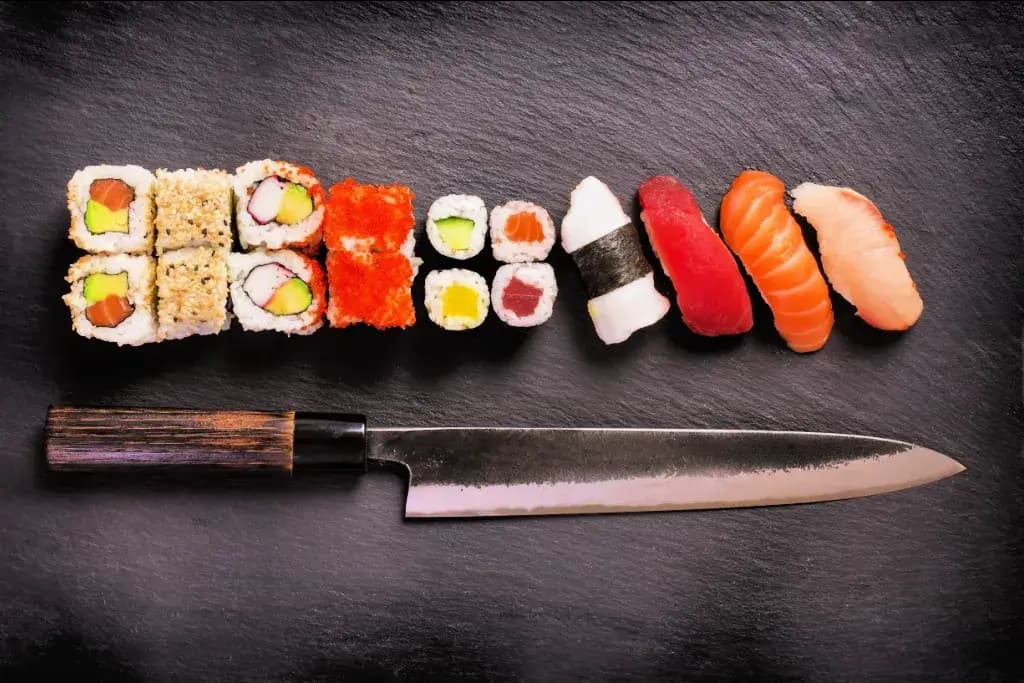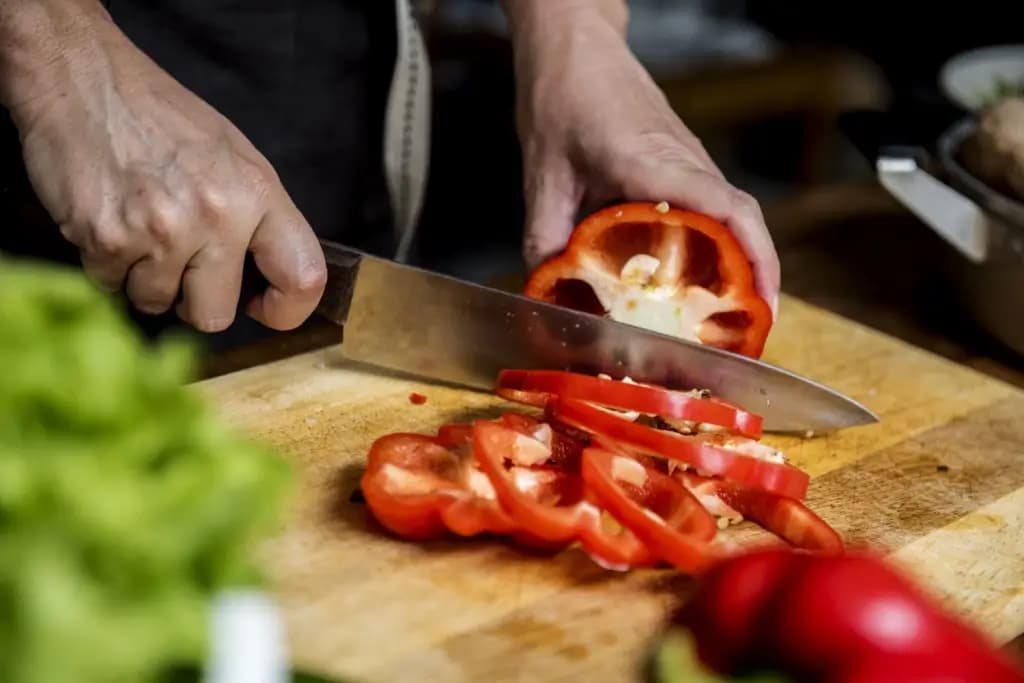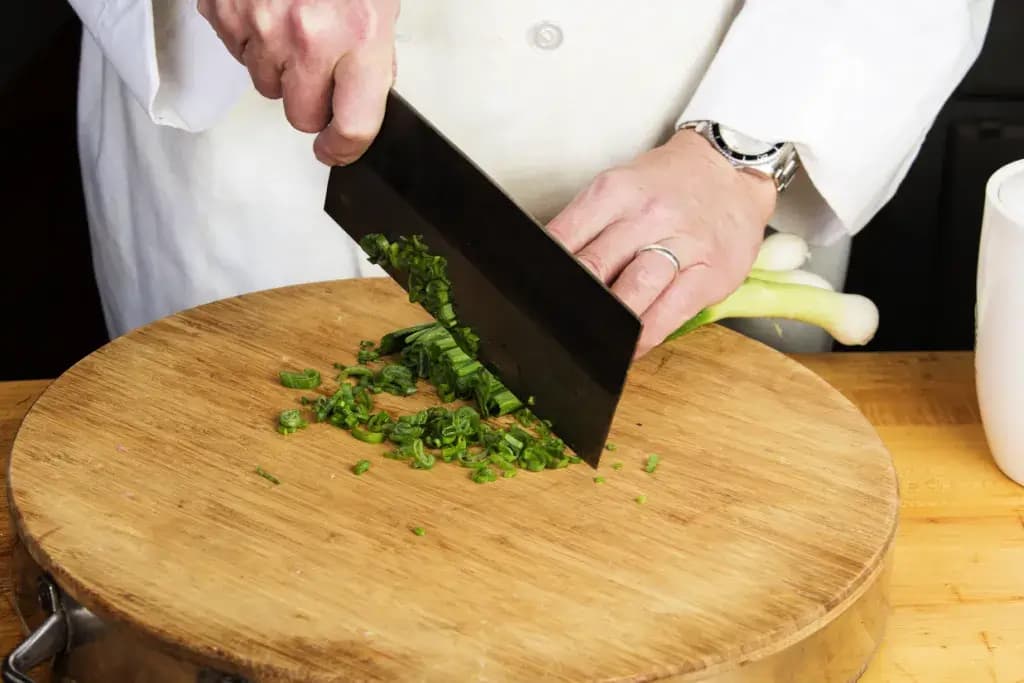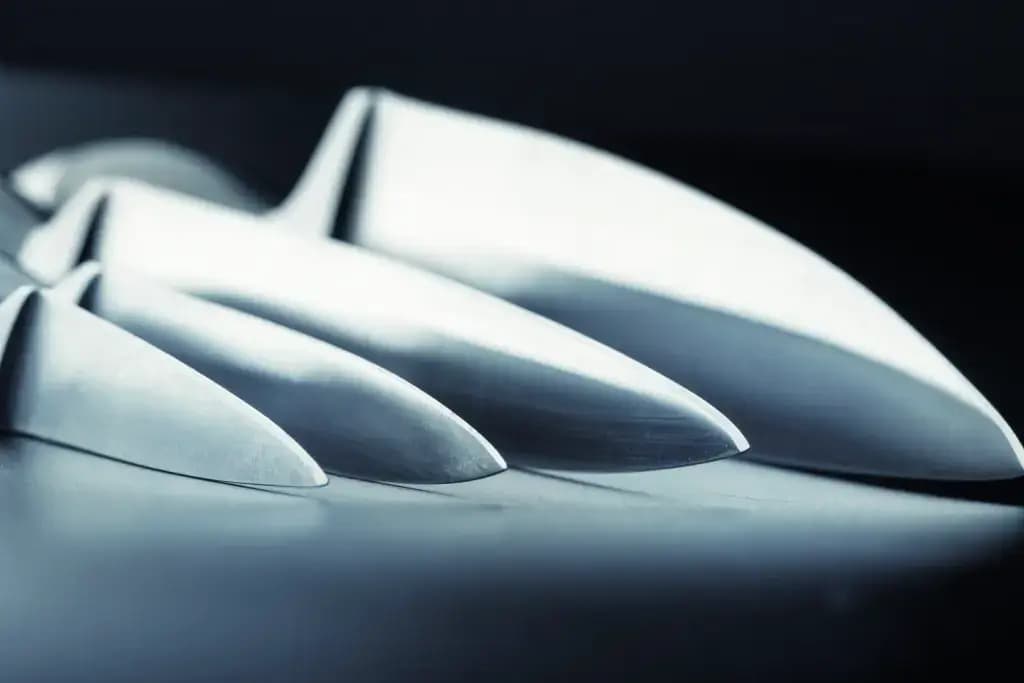

2025 OCTOBER 21
.Thuy Fang
Sujihiki and Beyond: Exploring Niche Japanese Blades
In Japan, knives come in a great variety and can reach dozens of different types. If you think all knives are the same because they’re only for cutting, it’s hard to imagine why so many kinds exist! Each knife is designed for a specific ingredient or purpose, making it truly specialized. If you’re interested in this topic, keep reading to learn more about four niche Japanese knives, including the sujihiki!
Sujihiki
The sujihiki is a graceful Japanese slicing knife known for its long, slim blade and incredible sharpness.. Born in Japan during the Meiji era (1868-1912), the sujihiki was created when swordsmiths began crafting kitchen knives instead of weapons. Its elegant design reflects both Japanese tradition and the influence of Western carving knives.

Its name means “muscle cutter”, and that perfectly describes its purpose. The sujihiki has a double-edged blade, meaning it’s sharpened on both sides, so both right and left-handed chefs can use it easily. Because the blade is thin and light, it slices through meat or fish with very little resistance, keeping the food’s texture and flavor fresh. This makes it especially loved by sushi chefs, who need perfect slices for sashimi and sushi rolls.
With its slim shape, the sujihiki is best for cutting boneless meats, trimming fat, or filleting fish. You can slice ham, roast beef, or salmon in one smooth motion without tearing the flesh. The blade’s sleek design also reduces friction, helping each slice look clean and professional. Most sujihiki knives are between 21 and 36 cm long (8 to 14 in), long enough to handle large cuts gracefully.
Takohiki
This knife first appeared in Tokyo during the Edo period (1603-1868) and was mainly used by sushi chefs in the Kanto region. Its name comes from two Japanese words: tako (octopus) and hiki (to pull). Over time, it became an essential knife for preparing sashimi and sushi. The takohiki usually measures between 21 and 33cm (8 to 13 in), with longer blades offering smoother cuts. It’s best for slicing fish, octopus, or even soft jelly-like foods such as kanten.

Unlike the yanagiba from Osaka, which has a curved edge and a pointed tip, the takohiki features a flat edge and a square end. This design makes it easier to slice delicate fish or soft ingredients without tearing them. The straight edge also helps chefs lift thin slices from the cutting board and place them neatly on a serving plate.
Many stories surround the origin of its shape. One legend says chefs changed the sharp tip of their yanagiba knives to a square end after accidentally pointing them toward noble guests. Another tale tells that Tokyo chefs often sat while cutting, so the straight blade worked better with their higher cutting boards. Whatever the reason, this design soon became a symbol of skill and respect in the sushi world.
Are you looking for unique, well made snacks? Check out ZAKU! ZAKU has authentic knives handmade in Japan for all of your culinary needs!

Kaisaki
Among the many traditional Japanese knives, the kaisaki stands out for its small size and fine precision. Its name means “pocket edge”, showing how compact and handy it is. This knife was first created for preparing shellfish, especially clams, in traditional Japanese cuisine. As the years passed, chefs began to use it for making beautiful garnishes and handling delicate cutting work.
The kaisaki’s blade is shaped a bit like a miniature yanagiba. This single-edged blade allows chefs to make smooth, precise cuts without breaking the shape of soft ingredients. Its sharp, pointed tip is perfect for trimming, peeling, and slicing with great accuracy. Though small, it moves gracefully through fish or vegetables, offering perfect control even during detailed tasks. Many Japanese chefs rely on it for filleting small fish.
Light in weight but strong in spirit, the kaisaki shines in tasks that need care and attention. It’s ideal for detailed work, such as shaping vegetables, peeling fruits, or cutting thin slices of seafood. Because it is thinner and lighter than a Deba knife, it helps the chef handle fragile ingredients without damage. Its short blade, usually about 12 to 15 cm (5 to 6 in), feels natural in the hand and allows delicate movement.
Maguro Bocho
The maguro bocho is a special knife made for one grand purpose: cutting giant tuna. Its name literally means “tuna knife”. Unlike ordinary kitchen knives, this one looks almost like a sword, with a long, slender blade made to move smoothly through huge fish. A maguro bocho can be as short as 30cm (12 in) or as long as 150cm (60 in). Plus, its handle is made long too, giving the user better balance and control.

This knife first appeared in Japan’s busy fish markets, where tuna cutting was both a job and a show. It became famous at places like Tokyo’s Tsukiji Market, where skilled fishmongers use it during tuna auctions. Watching them handle such a long knife with perfect precision is almost like seeing a traditional art performance. Sometimes two people use this knife, one holding the handle and the other supporting the tip with a towel to slice a tuna smoothly.
The tuna knife is softer than most Japanese knives, which makes it easier to repair after heavy work. Its flexible blade can follow the natural curve of a tuna’s spine, leaving almost no meat behind. This feature is what makes it truly special among Japanese knives. Every slice aims to keep the tuna’s flesh neat and clean.
Why might I need these types of knives?
These knives may seem like tools for professionals, but each one tells a story of skill, purpose, and respect for ingredients. You might not need every type, yet understanding them can deepen your appreciation for how food is prepared. Each knife, from the slender sujihiki to the powerful maguro bocho, was made to handle a specific task with grace and precision.

Even for home cooks, learning about these knives can inspire new ways to think about food. They reflect centuries of Japanese craftsmanship, where even small details are shaped by experience and culture. Knowing why they exist helps us see how much thought goes into every meal we enjoy. So, would you like to try using one of these Japanese knives someday? Share your thoughts below!


















